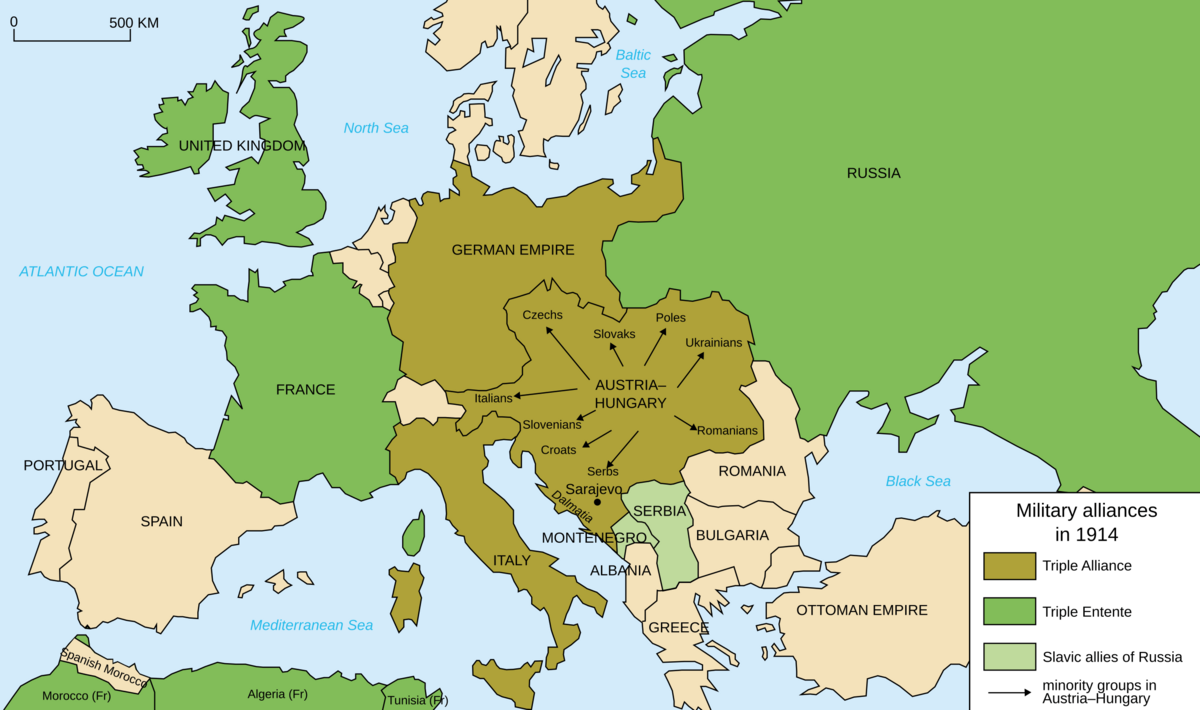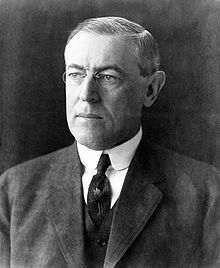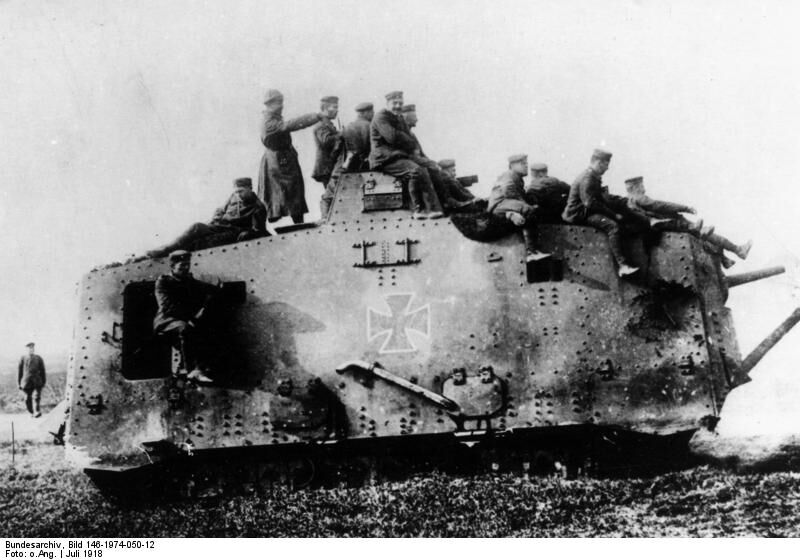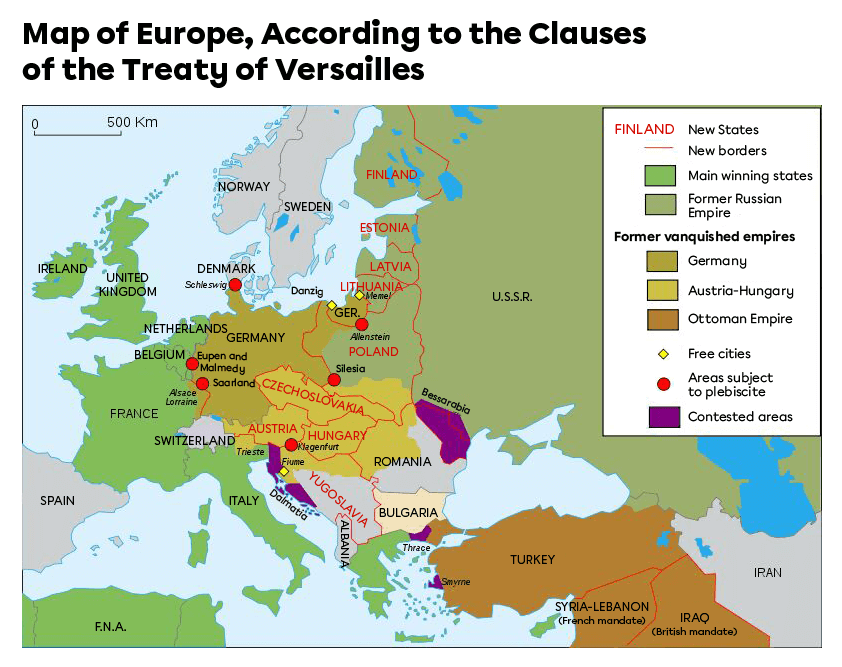At the end of the 19th century, the greatest colonial powers in Europe were France and the United Kingdom. The German Empire, strengthened by its industrial revolution, accumulated wealth and wanted to take its place alongside the European powers. Germany’s industrial production was beginning to rival England’s production. At the time, large countries were fighting for control of new African colonies. France, Germany and the United Kingdom were fighting over several territories.
Before these political tensions began to rise, Europe was living in peace and harmony and experiencing economic growth. This peaceful period between the end of the 19th century and the start of the 20th century was named the Belle Époque. Amid these tensions, the German Empire initiated a global policy aimed at occupying an increasingly significant position on the international stage.
With a population of more than 60 million people, compared to France and the United Kingdom with 40 million each, Germany was able to achieve its ambitions.
All European countries relied on strong feelings of nationalism, and urged their people to embrace their patriotism. This desire was even stronger among the French people. France had lost Alsace-Lorraine to the German Empire after its defeat in 1871 and the French longed to recover these territories.
As political tensions worsened, Germany proposed a military alliance to Austria-Hungary in 1879. Italy joined these two countries in 1881, forming the Triple Alliance. German Kaiser Wilhelm II aimed to politically isolate France amid Europe’s instability. France felt betrayed by Italy’s alliance since it had helped Italy unify. French authorities quickly allied with the Russian Empire in 1891, despite France’s fears about the autocratic system of the Russian Tsars.
In 1904, France and the United Kingdom formed an alliance, putting aside all past wars and rivalries over colonies. France, Russia and the United Kingdom formed the Triple Entente. Most of Europe was divided into two distinct factions. Germany, which wanted to isolate France, was stuck between France and Russia.

European leaders felt the increasing threat of war. In Germany, Wilhelm II built a large naval fleet to compete with the British navy. Implemented in 1913, the Reichstag implemented a policy aimed to improve military equipment and drastically increase the number of soldiers.
France increased the strength of its army by emphasizing the cult of military strength and extending mandatory military service from 2 to 3 years. The idea of war with Germany heightened the French people’s resolve to take back possession of Alsace-Lorraine.
-
France’s relationship with Germany had been strained since France’s defeat in 1871. Its conflicts with Austria-Hungary dated back hundreds of years. Colonial rivalries in Africa only made matters worse. Its alliance with Russia was purely for political reasons to intimidate Germany.
-
Tsar Nicholas II had recently tried and failed to expand Russia’s territory in the Far East, but his armies were held back by the Japanese. The tsar wanted to reunify his country by conquering the Ottoman Empire, which had been weakened by the wars in the Balkans. Russia hoped to gain control of Istanbul and supported Serbia’s fight for independence.
-
Austria-Hungary was prosperous, but began facing several national demands from the various peoples occupying the territory.
-
The German Empire wanted to play an increasingly important role in the world, hence the competition with the United Kingdom for maritime (naval) power. Its expansionist policies also aimed at keeping the empire intact. Germany had a strong influence on Turkish leaders.
-
Italy wanted territorial concessions in France and the Austro-Hungarian provinces. Italy was newly unified and wasn’t a major military force.
-
The Ottoman Empire had very little influence, having lost much of its political power. It owned the Balkans but was unable to keep the territory stable.
In 1908, the Young Turks, dissatisfied with the Sultan’s administration, revolted and took power. The Young Turks’ Revolt was meant to slow the Ottoman Empire’s decline. In 1912, the First Balkan War started.
The Ottoman Empire lost Libya and the Bulgarians settled in Istanbul. The Second Balkan War started in 1913. The Young Turks were unable to save an empire on the verge of collapse. All the countries in Europe had their eye on the Ottoman territories.
Austria-Hungary had possession of Bosnia, which Franz Ferdinand, heir to the Austrian throne, was visiting. On June 28, in Sarajevo, Franz Ferdinand and his wife were assassinated by a young Serbian nationalist.
This incident was instantly troubling to all the various leaders. Right away, Austria-Hungary suspected Serbia of organizing the assassination. Austria also wanted to limit Serbia’s power in the Balkans. Austria’s ally Germany advised Austria to be firm and to react strongly to this offence. The two allied powers were fully aware of the risk of war, but believed it was low. Germany was convinced that Russia wouldn’t support Serbia.
On July 23, Austria sent an ultimatum to Serbia. One of the clauses of this ultimatum allowed Austrian authorities to be involved in investigating the assassination. Serbia immediately rejected this ultimatum. Sensing the risk of war, the United Kingdom offered to mediate three different times on July 25, 26 and 27. This attempt was futile as Austria officially declared war on Serbia on July 28, 1914.
This declaration of war led to subsequent alliances and declarations of war. On July 29, 1914, Russia sent troops to Serbia, with France’s support. On August 1, Germany declared war on Russia before declaring war on France on August 3.
Germany began its military invasions in Belgium, which was a neutral state during the war. The United Kingdom protected its neutrality. With Germany intentionally violating Belgium’s neutrality, the United Kingdom had to intervene and entered the war on August 4. British leaders also became involved in the war to create a better balance of power and combat the German threat. As soon as the United Kingdom declared war, Canadian authorities ensured Canada’s participation in the war.
The Great War had begun. Everyone was sure that it would be short-lived and that the issues would be resolved swiftly. People were ready to defend their country and their nation. France sent 4 million men, 10% of its total population, to war, while England sent 2 million men to the front lines.
After invading Belgium and violating its neutrality, the German armies gradually moved towards northern France and Paris. Germany’s invasion went as planned by quickly neutralizing and surrounding the French army, forcing French and British soldiers to retreat to Paris.
A large number of French soldiers were posted in Alsace-Lorraine, but the German army easily bypassed them and gained access to all of France. Germany’s advance slowed as the French successfully defended their capital. The German front was forced to retreat in December, its battle plan unsuccessful for the first time since the beginning of the war. The front, stabilized and virtually immobile, was 750 kilometres long. This was the start of trench warfare, where soldiers took shelter in trenches dug in the ground. They tried to gain an advantage over enemy soldiers, who were also camouflaged and hiding in trenches.
At the same time, in September, the Russian front was advancing on the Germans, thanks to railroads. Germany still managed to occupy Poland, and easily conquered the Eastern front. German soldiers were welcomed by the people who had been persecuted and neglected by Russian rule. These conquests discouraged Russian soldiers.
Austrians won some territories before being defeated by the Serbs and Russians. In August 1914, Japan entered the war against Germany after demanding that it withdraw all of its warships from the Asian seas. Meanwhile, Great Britain established a naval blockade of Germany. In October 1914, the Ottoman Empire was fighting against Russia. The Ottoman Empire blocked the straits to prevent the Russian armies from getting supplies. On November 2, 1914, Russia declared war on Turkey, followed by France and Great Britain, who sent armies to the Persian Gulf.
In May 1915, Italy, which had remained neutral, became interested in the potential for territorial gains and joined the Triple-Entente (France, Russia, England). The fighting continued, but the front remained in place. A static front required new weapons, and artillery played a major role. Trench warfare was fought with bayonets, cannons, poison gas and tanks. These new weapons were mass-produced in factories and changed the shape of the first war involving several major world powers.
On April 22, 1915, German soldiers used chemical weapons for the first time in history. They sent waves of chlorine gas over the trenches, burning the soldiers’ eyes and lungs. For the rest of the war, both sides used chemical weapons and gases extensively. Some gases killed enemy soldiers in as little as twenty seconds. In October 1915, Bulgaria entered the war allied with Germany, which led to Serbia’s defeat.
The fighting continued in 1915 and 1916, but the front did not move. The war dragged on for the soldiers in the trenches. Soldiers on both sides were frustrated by the terrible conditions in the trenches, the alarming number of bodies piling up and their leaders’ lack of consideration for the lives lost.
Soldiers in the trenches endured diseases, freezing temperatures, lice and constant fear. The fighting and the political situation had stagnated. These factors depleted the soldiers’ morale, leading to several mutinies. In Italy, the Austrians and Germans launched a surprise attack, causing many soldiers to flee in panic. Many soldiers deserted their posts due to low morale. After these events, France and Britain provided support to the Italian army in the form of reinforcements, cooperation and tactical training.
On the Russian front, the soldiers deserted the army and pillaged the land. The army was breaking down, especially after the February Revolution of 1917. The war eventually took on a different shape with democracies opposing the monarchies. Russia’s political instability increased protests within the army. Several mutinies were put down by executions and Russian Bolsheviks demanded an immediate end to the war. Their leader, Lenin, was in exile in Switzerland. Germany, which wanted the war to end to avoid a possible defeat, favoured Lenin’s return to Russia.
In early 1917, Germany resumed submarine warfare, with the aim of starving England to weaken their army. German authorities also urged Mexico to go to war with the United States. Upon learning this, the US government declared war on Germany on April 2, 1917. The arrival of American troops increased Germany’s struggles on the Western Front. Several Latin American countries followed the United States in declaring war. American reinforcements were a significant factor for the rest of the war.
In late October 1917, Lenin launched a coup d’état and took power. He established his dictatorship and immediately ended the fighting. Russia was the first country to establish a communist totalitarian regime where individual rights and freedoms were given up in favour of moral values for the good of the nation. Lenin guaranteed happiness for all, as long as everyone followed the rules without question.
The communists of the time associated the war with capitalism. They believed that capitalism directly caused the war and that the thirst for power and profit could only lead to conflict. A communist society could fix this situation, which made communism more popular among the people. On November 26, 1918, the Bolsheviks proposed an armistice. However, negotiations were unsuccessful, hampered by Ukraine’s ambitions for independence. Germany took the opportunity to launch an attack on the Eastern Front. Having achieved their goals in the east, the central empires sent most of their troops to the west, leaving some soldiers in the east to protect their gains.
On January 8, 1918, US President Wilson outlined Fourteen Points that he intended to enforce, including freedom of navigation, the birth of new states and the creation of the League of Nations (LoN), the United Nations’ predecessor.
The Treaty of Brest-Litovsk, signed on March 3, 1918, secured Germany and Austria’s victory on the Russian front, allowing them to move westward. In March 1918, the Germans bombed Paris. France, aided by the Americans, retaliated in July 1918, forcing the German army to retreat. Power was balanced by the presence of the American army and the arrival of several mass-produced military equipment such as tanks, planes and artillery.
On September 29, 1918, Bulgaria signed the armistice, followed by the Ottoman Empire the next day. The Austro-Hungarian Empire lost its defences in the south and lost contact with Germany. Italy and Austria-Hungary signed the armistice on November 3. Austria-Hungary was dissolved and several nations gained independence, including the Czechs, Hungarians, Croats and Slovenes.
Meanwhile, communist ideologies were spreading in Eastern Europe. In Germany, there were multiple strikes, uprisings and attempts to establish a government similar to the one in Russia. Fearing the success of the revolutionary movement, the governors and military convinced Wilhelm II to abdicate. On November 11, he signed an abdication statement that ended the war. Germany was proclaimed a republic, ending the German Empire. Emperor Charles I of Austria abdicated on November 13. The peace Treaty of Versailles was officially signed on June 28, 1919 in the Hall of Mirrors of the Palace of Versailles.
World War I had major impacts on soldiers, civilians and politicians alike.
This was the first war involving so many nations and human lives. The escalation of alliances and international tension took everyone by surprise. No country or leader tried to stop it, causing the world’s greatest powers to declare war on each other one after the other.
The countries that entered the war were all convinced that it would be short-lived. No one expected it to last four years and no one could have predicted how deadly it would be. People in every country lost confidence in their leaders who were unable to put an end to the war. Governments censored information to avoid losing what little trust the people had in them. Many images of the trenches were not shown to the public.
In addition to involving several countries, World War I drew international attention because soldiers had to fight with new weapons and more violent combat techniques. Artillery and aviation changed the way the war was fought. The weapons used were very deadly and the trenches caused psychological trauma for the soldiers.
With modernized weapons such as bayonets, hand grenades, poison gas, flamethrowers and aerial bombings, soldiers fought in close combat, moving from one trench to another under machine gun fire.
Starting in 1916, tanks were used more frequently. Combined with the air force, tanks were a nearly unstoppable force. Nowhere was safe, not even cities and public places.
Starting in September 1914, soldiers had to dig trenches for protection. The trenches were continuously dug and improved until the end of the war. On the front, the trenches were the only protection against shells and bullets. However, they were ineffective against torpedoes and gas.
For this reason, the trenches often included shelters and alcoves in the walls. Many trenches were complex and included a communication network, parapets, concrete walls, barbed wire and booby traps. Soldiers in the trenches not only had to fight off enemy fire, but also survive in muddy, cold and wet conditions. The walls could collapse at any time. The soft ground made movement slow and challenging.
Night watchmen were always on the lookout for enemy troops and bombs. The trenches ran parallel to the enemy line and served as both protection and camouflage. They were connected to each other by narrow passageways perpendicular to the front line, which were used to move men and equipment. The area between opposing armies and trench lines was called No Man’s Land.
When thousands of men went off to war, many couples and families were separated, leaving them without the support they needed during tough times. Soldiers often died alone, and their families didn't know the extent of their suffering. To make things worse, families sometimes got news of these deaths weeks later, making their grief even harder to bear.
All the difficulties experienced during the war reduced the sense of patriotism that the armies so desperately needed to win. For the first time, people experienced mass death and anxiously waited for news from the front lines. The war created many widows and orphans.
During the war and the few years that followed, there were not many young men left, which caused the birth rate to drop. Civilians experienced violence at the hands of soldiers during invasions such as bombings, executions, rape, looting, hostage taking, ransacking, etc. Civilians were vulnerable with no way to escape. Enemy troops deliberately destroyed many public buildings and artistic treasures.
The war destroyed several heritage sites in many cities as a way to hinder enemy troops and slow down the return to civilian life. Air raids completely destroyed roads, houses, wells, villages, handicrafts, industries, agricultural facilities and gardens. Air raids eliminated the distinction between military and civilian spaces. Unarmed areas were no longer spared. Aerial bombings also drastically increased the number of casualties and the amount of destruction. In many respects, World War I redefined the way war was fought.
The peace treaty was signed in the Hall of Mirrors in Versailles. A total of 27 allied countries were represented against Germany, which was found responsible for starting the war.
Four negotiators wrote the peace treaty: Georges Clémenceau (France), David Lloyd George (United Kingdom), Thomas Woodrow Wilson (United States) and Vittorio Orlando (Italy). They were all suspicious of the communists in Russia and Central Europe. For this reason, Russia was left out of the peace negotiations. Because it was excluded, Russia refused to repay the money it borrowed from France during the war.
Unlike all the other countries, the United States emerged victorious and economically strong from the war. Wilson’s aims focused on the right of peoples to self-determination and the creation of new independent countries. Britain had its eye on Germany’s African colonies and on the domestic markets.
Italy aimed to annex the former Austro-Hungarian territories along the Adriatic Sea, while France was eager to reclaim Alsace-Lorraine. The negotiations were biased, as each country's representative pursued their own objectives. Meanwhile, Germany was excluded from the discussions.
Germany, identified as the real culprit for starting the war, lost out in the negotiations. By signing the treaty, the German government acknowledged it was responsible for starting the war and had to respect the clauses of the treaty.
-
Germany had to give up 8% of its territory, where 10% of its population lived. France gained Alsace-Lorraine, Belgium gained two cities and the eastern provinces were used to create Poland.
-
The German government also lost control of its African and Asian colonies. France, Belgium and Great Britain took over the African colonies. Japan was given the Chinese provinces, causing numerous protests from the Chinese government, which left negotiations in May 1919.
-
The treaty also required Germany to become a democratic republican state. Authorities made efforts to have former Emperor Wilhelm II and other high-ranking officials tried as war criminals.
-
To ensure that Germany would never again try to invade its neighbours, the negotiators imposed an army limited to 100 000 volunteers, with no military equipment.
-
Germany also lost its patents and the allied countries exploited its coal mines.
-
Germany was ultimately ordered to pay 269 billion gold marks to cover financial and material reparations in 1921. This sum was higher than Germany’s annual national income.
One of the economic advisers resigned after hearing this announcement. He had suggested that the sum not exceed 60 or 70 billion to allow Germany to rebuild and avoid economic crises in Europe. To which Clémenceau replied: “Germany will pay!”
The Treaty of Versailles also created the League of Nations tasked with resolving future conflicts. Several clauses of the treaty were not fully implemented. But many Germans resented the Treaty of Versailles and viewed it as a national humiliation. Without its army, coal mines or colonies and with a huge debt to repay, Germany was left without the resources to rebuild its country and economy.
The country was unable to repay the debt and was plagued by numerous economic and political crises. These crises and the population’s resentment were some factors that led to the events that caused World War II.
Written in French and English, the Treaty of Versailles was the first international treaty since 1714 where French was not the only official language. Since then, English has become the official language of international negotiations and treaties.
During World War I, 11 million soldiers died on the Western Front, and more than 6 million were disabled. Lives were also claimed by the Spanish flu and malnutrition due to rationing during and after the war.
Countrysides, towns and villages were in ruins. European countries had to rebuild while owing money to the United States. The United States was the biggest winner of the war, even if its direct participation was relatively limited. The US dollar gradually replaced the British pound as the global currency. The European countries, poor and in ruins, had lost their international influence to the United States.
The war caused the German Empire, the Austro-Hungarian Empire, the Ottoman Empire and Tsarist Russia to collapse, leading to the fall of the monarchy.
The face of Europe changed after the war with the creation of new states: Czechoslovakia, Yugoslavia, Austria and Hungary; the reconstitution of Poland with territories from Germany, Austria, Hungary and Russia. Many ethnic conflicts arose in these new countries as different peoples lived there with their own languages, religions, cultures and customs that did not necessarily co-exist harmoniously.


